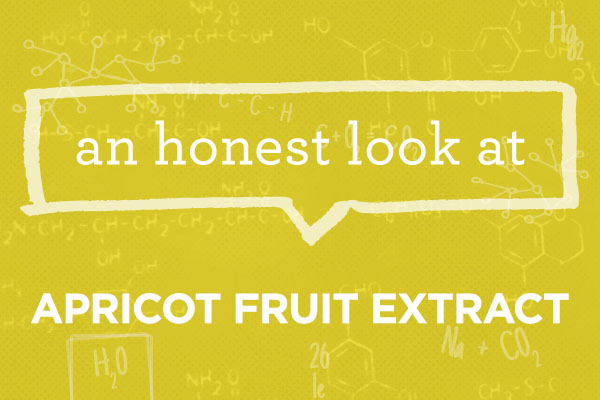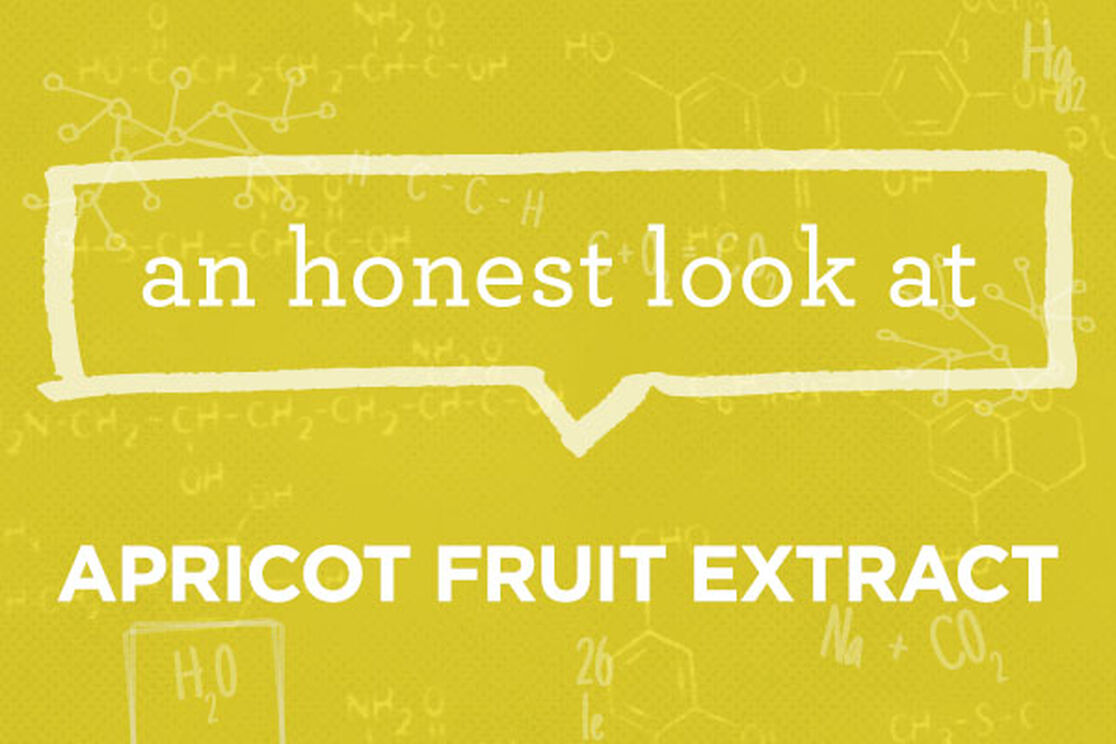
This is part of our ongoing series helping consumers better understand chemicals, chemistry, and product formulations. We translate the science, bust the myths, and give you an honest assessment, so you can make informed choices for your family!
Ingredient:
Prunus Armeniaca (Apricot) Fruit Extract
What it is:
Prunus Armeniaca (Apricot) Fruit Extract comes from a fruit originally cultivated in China over 3,000 years ago – and it’s the same fruit you can get at your local grocery store (1).
What it does:
Apricots aren’t just awesome for eating, the fruits are rich in minerals, organic acids, phenolic compounds and carbohydrates that offer additional benefits (2-4). For example, in skin care Prunus Armeniaca (Apricot) Fruit Extract is nourishing, helps to enrich and support the skin’s natural moisture balance, and helps leave skin touchably soft and smooth (2-6).
Why we use it:
With such a long, long history of safe use and with an increasing body of research uncovering benefits, we chose to use Prunus Armeniaca (Apricot) Fruit Extract in some of our Personal Care products to help them be more effective at supporting your skin’s health and helping you look your best!
References:
- FOOD HISTORY. (n.d.). Retrieved January 22, 2016, from http://www.world-foodhistory.com/2010/08/origin-of-apricot-prunus-armeniaca.html
- Wani, S. M., Jan, N., Wani, T. A., Ahmad, M., Masoodi, F. A., & Gani, A. (2015). Optimization of antioxidant activity and total polyphenols of dried apricot fruit extracts (Prunus armeniaca L.) using response surface methodology. Journal of the Saudi Society of Agricultural Sciences.
- Kan, T., Gundogdu, M., Ercisli, S., Muradoglu, F., Celik, F., Gecer, M. K., ... & Zia-Ul-Haq, M. (2014). Phenolic compounds and vitamins in wild and cultivated apricot (Prunus armeniaca L.) fruits grown in irrigated and dry farming conditions. Biological research, 47, 1-6.
- Erdogan-Orhan, I., & Kartal, M. (2011). Insights into research on phytochemistry and biological activities of Prunus armeniaca L.(apricot).Food Research International, 44(5), 1238-1243.
- Engel, R., Abrankó, L., Balogh, E., Blázovics, A., Hermán, R., Halász, J., ... & Stefanovits‐Bányai, É. (2010). Antioxidant and antiradical capacities in apricot (Prunus armeniaca L.) fruits: variations from genotypes, years, and analytical methods. Journal of food science, 75(9), C722-C730.
- Packianathan, N., & Kandasamy, R. (2011). Skin Care with Herbal Exfoliants. Functional Plant Science and Biotechnology, 5(1), 94-97.
Still have questions? Let us know in the comments section below!
We aim to provide you with the most honest and credible information possible. This article was reviewed for accuracy by The Honest Team and was written based on sources that are linked at the bottom of the article.
blog_review_statement



